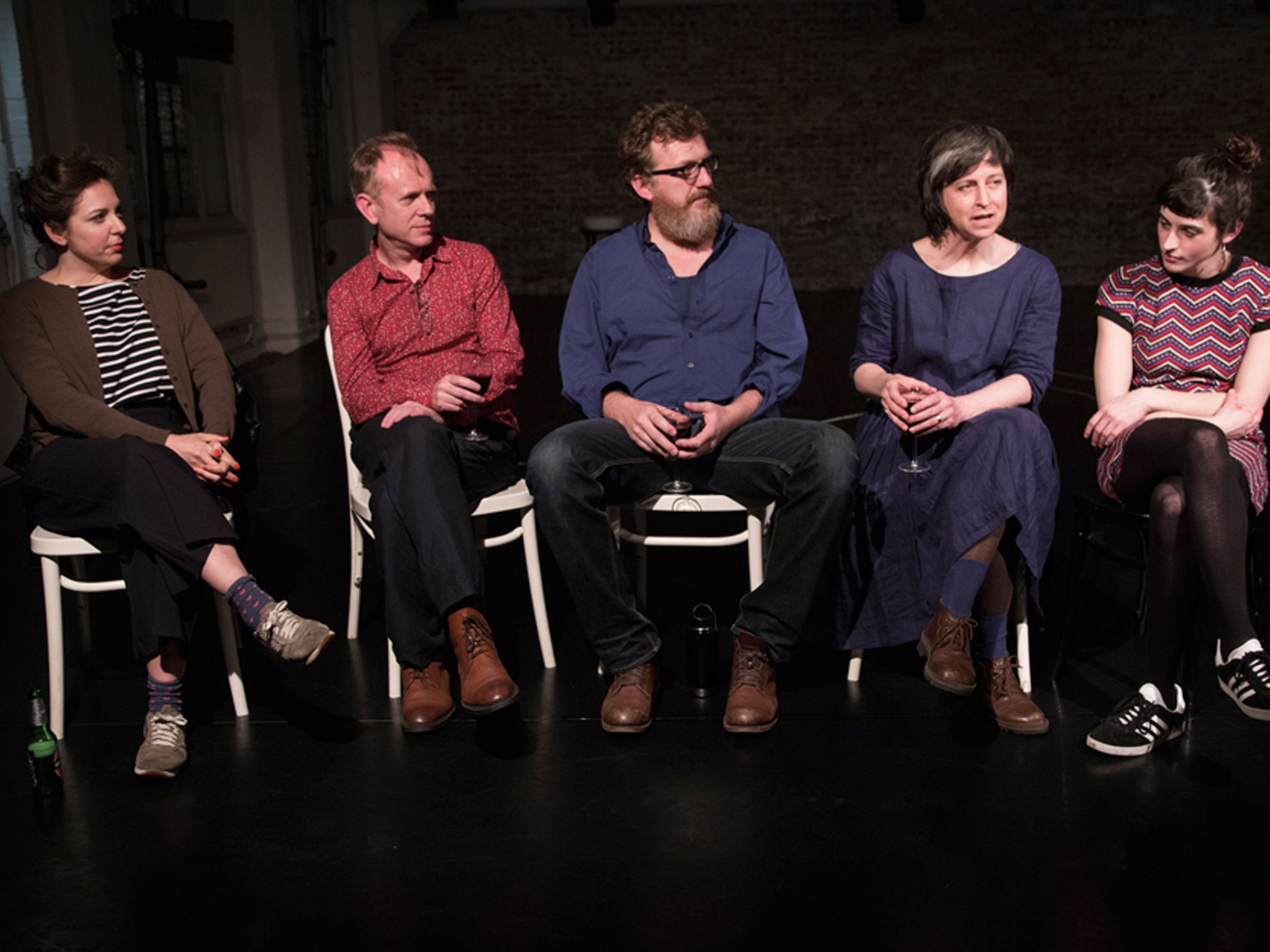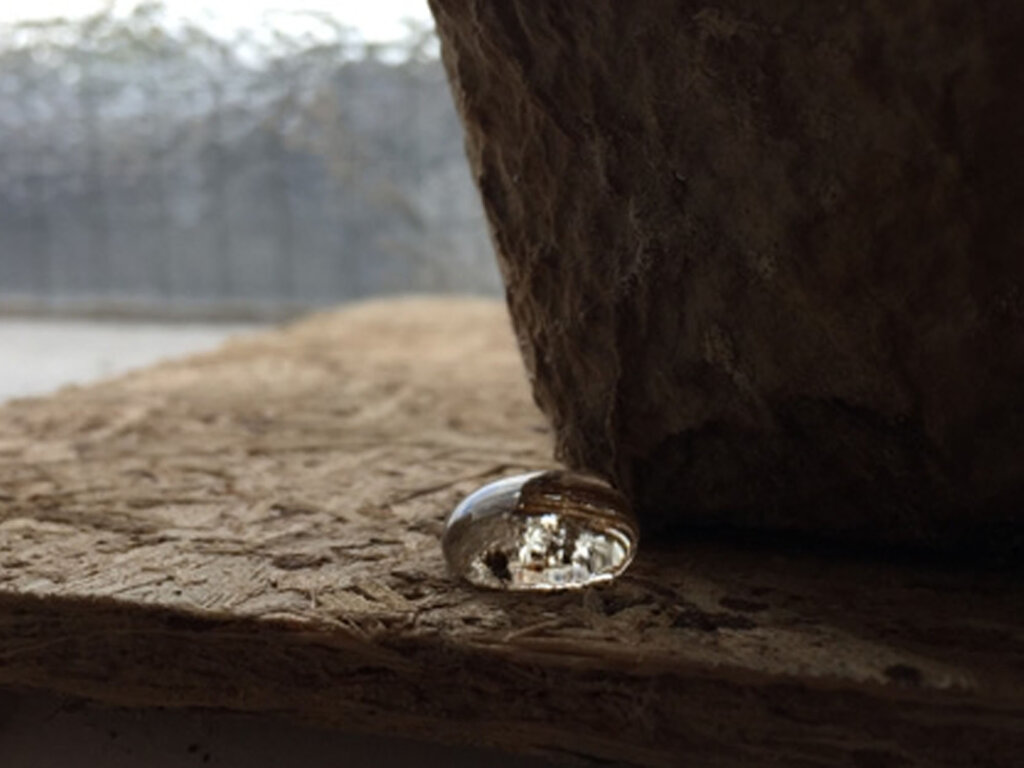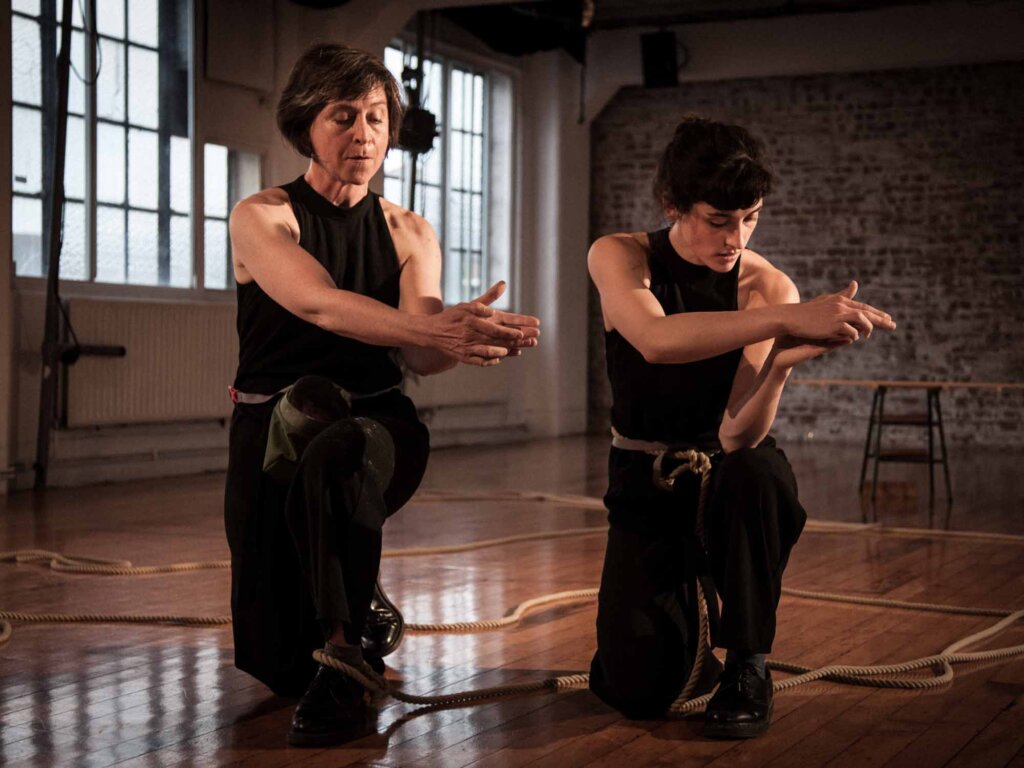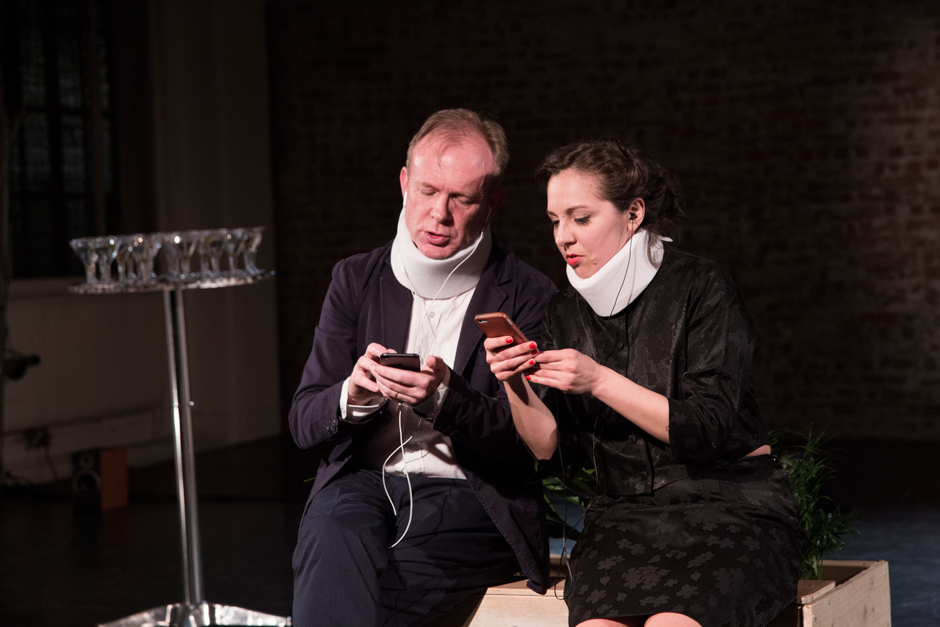During the TwoFold festival we had post-show discussions after each of the studio duet double bills. The post-show discussion brings out hidden or latent significance partly because everyone has seen the work from a different point of view or set of equivalencies or preoccupations or mind climate or condition (or what have you). What one person considers obvious may not have occurred to anyone else in the room and when those present share their individual positions on the work or its effect these ideas begin to spark associations whether in concert with or in contrast to what is expressed by others.
It is important to me that people feel they can speak about their impressions because these impressions are the specific currency of the work. Sometimes they are based in intellectual ideas, sometimes they are based in emotion or sensation, sometimes they simply spark a memory and articulating this becomes a way of reading not only the piece observed but also for the observer to become more conscious of their own observations and how they might be slanted by their own filters. We come together over the ways that we agree or disagree about what happened in the room. Also about how these differences do not describe right or wrong, only difference. For this reason it is important not to think of the post-show discussion as a question and answer session.
Those of us who have made the work and shown it on a particular occasion do not hold the key to its significance. All we can do is talk about our own point of view. Our point of view is an intimate one, coming from within the making process as it does, but it is not a privileged position, it is equal to and mixed in with the views from the bodies of the audience. As makers we learn what we have done from the audience. We know what we THINK we have done but it only becomes clear when we hear back from those who can see it from the outside. And they always see something other than what we have understood about the work before showing it.
In order to protect the audience point of view I often refuse to answer a question until the questioner has spoken a bit about the subject (or object) of their question so that we (both makers and viewers) understand what is driving the question and why this particular area within the material is of interest to the questioner. This draws out the discussion and makes clear the importance of individuals’ concerns and thought processes. This is a bit tricky in practice, especially if the question is challenging the work or seems to suggest a fault on the part of the performance makers. I usually attempt a friendly counter question. If the question is something like: “why are you making that line on the floor?” I say something like: “I will answer your question but first can you tell me what it makes you think of, or why you think we are doing it?” It may require a bit more back and forth but before long it always transpires that the questioner knows a lot about what the significance of the line might be and sometimes knows something that had not occurred to those of us who made the piece. It feels important to make sure that this intelligence from the mind of a viewer is protected and brought out for everyone to consider.
I suppose sometimes these thoughts are only just forming in the mind of the viewer as the question is turned back to them and this feels exciting to me. Sometimes, in my own experience, the parts I have questions about or think I don’t understand have caught my attention precisely because they are the very things that are speaking to me—it’s just that I don’t quite understand what they are saying until I put my focus there and attempt to communicate a question or simply form a sentence about the material that has caught my attention (or bothered me).
In addition to hearing from the audience, particular people with experience thinking and writing about performance have always been helpful as part of the process. The work of articulating sensations and of drawing lines between the work presented and the world of associations it links to improves with practice and over time. For this reason we welcome hearing from people who write about performance work. We regularly invite written response from performance writers and critics.
Mary Paterson was asked to write an overview (link to come) of the TwoFold festival of duet performances and this helps us make connections that we as makers are too close to the work to see for ourselves. After the final event of the festival I was exhausted and feeling somewhat chagrined that the final event was not as well attended as I would have liked. I had quipped to the audience that it almost felt like a performance in my living room for a set of friends. The event was a pair of performance-lecture-type presentations (see here) one of which was from a private performance that Rajni Shah and I performed weekly over a period of four years. Afterwards, Mary Paterson, who had been in the audience, commented that it was an interesting inversion that took place: a public event that felt private (due to the small number of viewers) and a private performance made public. It was a simple observation but the act of speaking that observation aloud gave a meaning to what took place that I would not have seen without her being there and making that statement. This articulation clarified something for me and sparked ideas that joined with other ideas around the subject of public and private.
What I’m saying is that I learn so much from other people’s observations.
Photo: Christa Holka.




